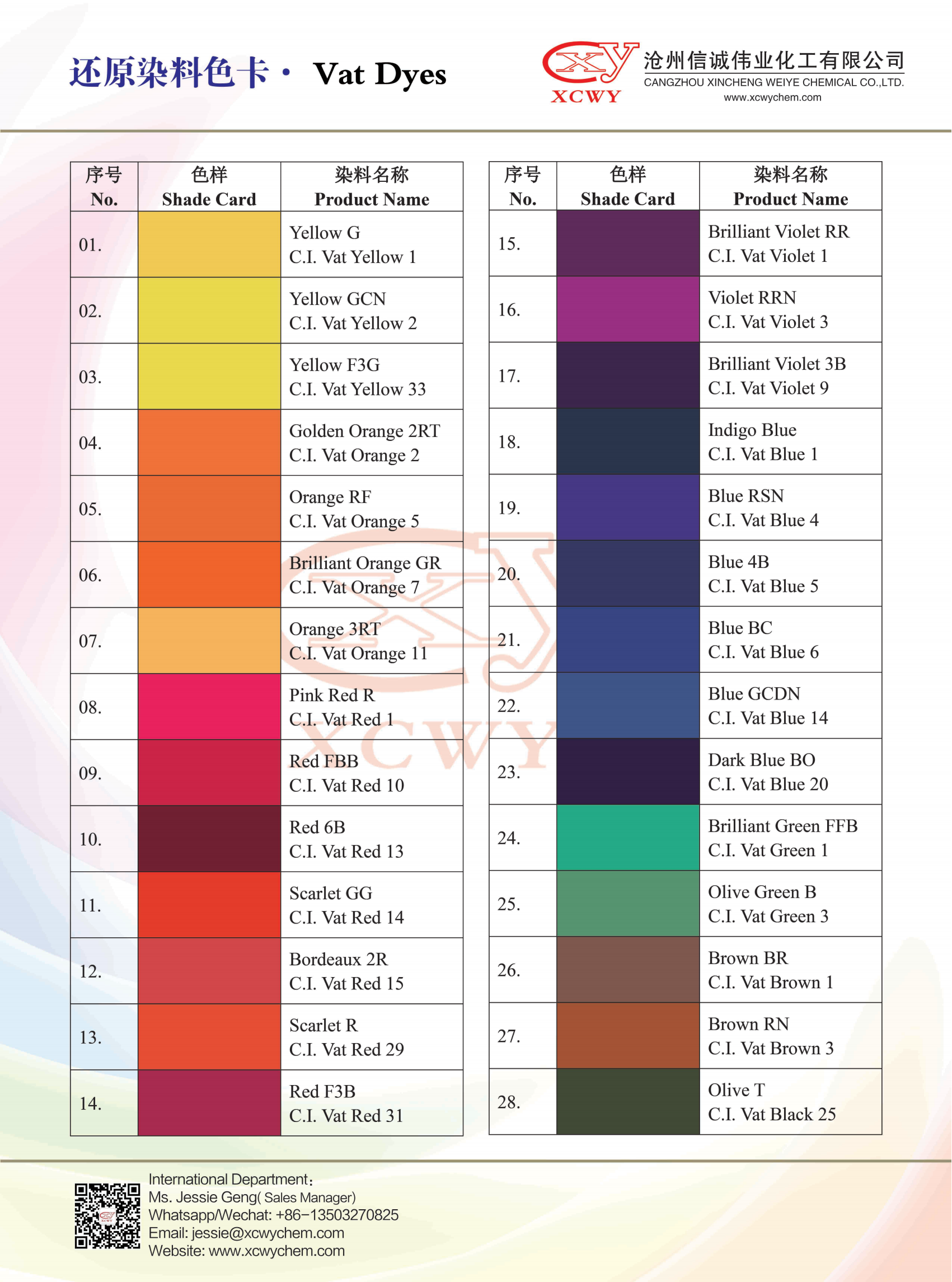The use of vat dyes requires a reduction process to generate soluble chromophores before dyeing, which involves multiple steps and precautions.
1. Restoration process:
Dyes need to be reduced to soluble sodium salt of the chromophore using a reducing agent (such as sodium hydrosulfite) under strong alkaline conditions in order to dye fibers. The reducing agent provides electrons, generates sufficient reduction potential, and reduces the carbonyl group on the dye molecule to an alcohol group, transforming it into a chromophore.
2. Dyeing steps:
After the dye transforms into a latent color, it is dyed onto the interior of the fiber.
After water washing and oxidation treatment, the dye chromophore is restored to a dye lake and adsorbed on the fiber.
3. Dye selection and classification:
Vat dyes are divided into anthraquinone dyes and indigo dyes according to their structure, among which anthraquinone dyes have more varieties.
Anthraquinone reducing dyes are the most important type, and most of the sodium hypochlorite salts have a darker color than unreduced ones.
4. Application and Features:
* Vat dyes have bright colors, complete chromatograms, and comprehensive dyeing fastness, with outstanding resistance to sunlight and washing.
* Suitable for dyeing and printing cotton, linen, and viscose fibers, but not suitable for dyeing protein fibers such as wool and silk.
Contact person: Miss Jessie Geng
Email:jessie@xcwychem.com
Mobilephone/Whatsapp: +86-13503270825
Post time: Oct-14-2024






